The Aeolian Islands are a wonder of nature that emerges powerfully from the waters of the Mediterranean. The Aeolian Islands-Lipari, Vulcano, Salina, Stromboli, Filicudi, Alicudi, and Panarea-are located northeast of Sicily and are a unique spectacle for how the relentless force of water, fire, and air have shaped not only the coasts and slopes but also the character of their inhabitants. The Aeolian Islands are an extraordinary testament to how volcanoes can lead to the birth and evolution of islands, and even todayvolcanic activity influences not only the landscape, but also the daily lives of those who live here or visit for an unforgettable trip. The continuous eruptions of Stromboli are a striking spectacle that brightens the nights of the Aeolian Islands with its fiery trails, but it is the entirearchipelago that offers unmissable naturalistic vistas that are accompanied by a rich social life. Beaches, coves, caves, inlets, stacks and a great variety and richness of seabed are the lowest common denominator of the Aeolian Islands, but no less distinctive are its many towns and villages. Here are the 10 must-see stops on your trip to the Aeolian Islands.
High above the sea, the castle of Lipari is definitely the first thing to catch the eye of the traveler who is landing on the island. This imposing fortress stands on a natural promontory between two inlets and towers over a small harbor. Archaeological excavations have shown that the entire castle area was populated as early as the Neolithic period and since then has been a silent witness to the long history not only of Lipari, but of the entire archipelago. The fortress owes its current appearance to Spanish rule when, around the middle of the 16th century, Charles V gave orders to build a defensive system that would guarantee protection for the island’s inhabitants in case of raids from the sea. Within the walled city, the castle of Lipari also retains several other valuable structures today, such as the church of Santa Caterina and the church of Addolorata.
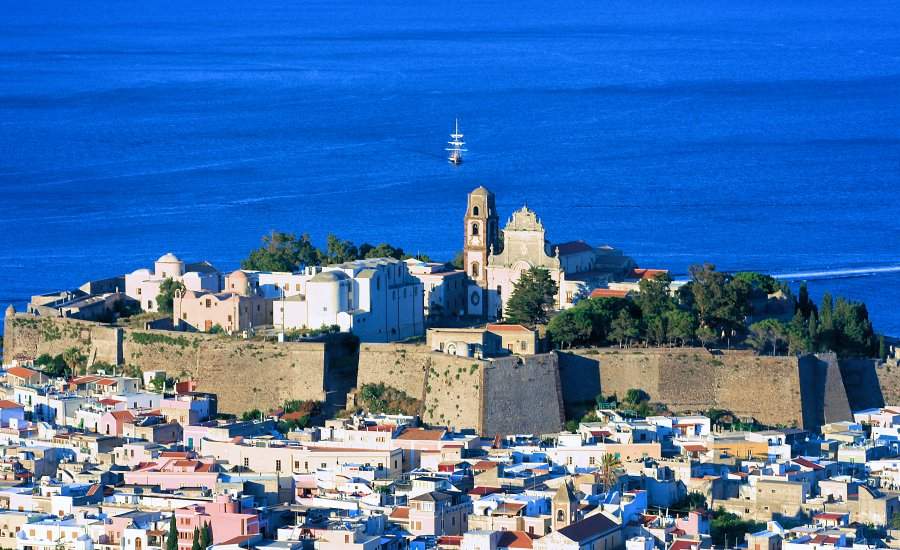
Inside the castle of Lipari is the splendid Archaeological Museum, which houses many artifacts that make it possible to trace the history of the Aeolian Islands from prehistoric times to the modern age. The museum is divided into six pavilions, which respectively house the Prehistoric, Epigraphic, Minor Islands, Classical, Volcanological and Quaternary Paleontology sections. The museum is named after Luigi Bernabò Brea, superintendent of eastern Sicily who, together with Madeline Cavalier, founded this exhibition space around the middle of the last century. The archaeological museum of Lipari over the years has seen its collections grow continuously thanks to constant and systematic archaeological research work carried out not only on Lipari, but also on the other islands.
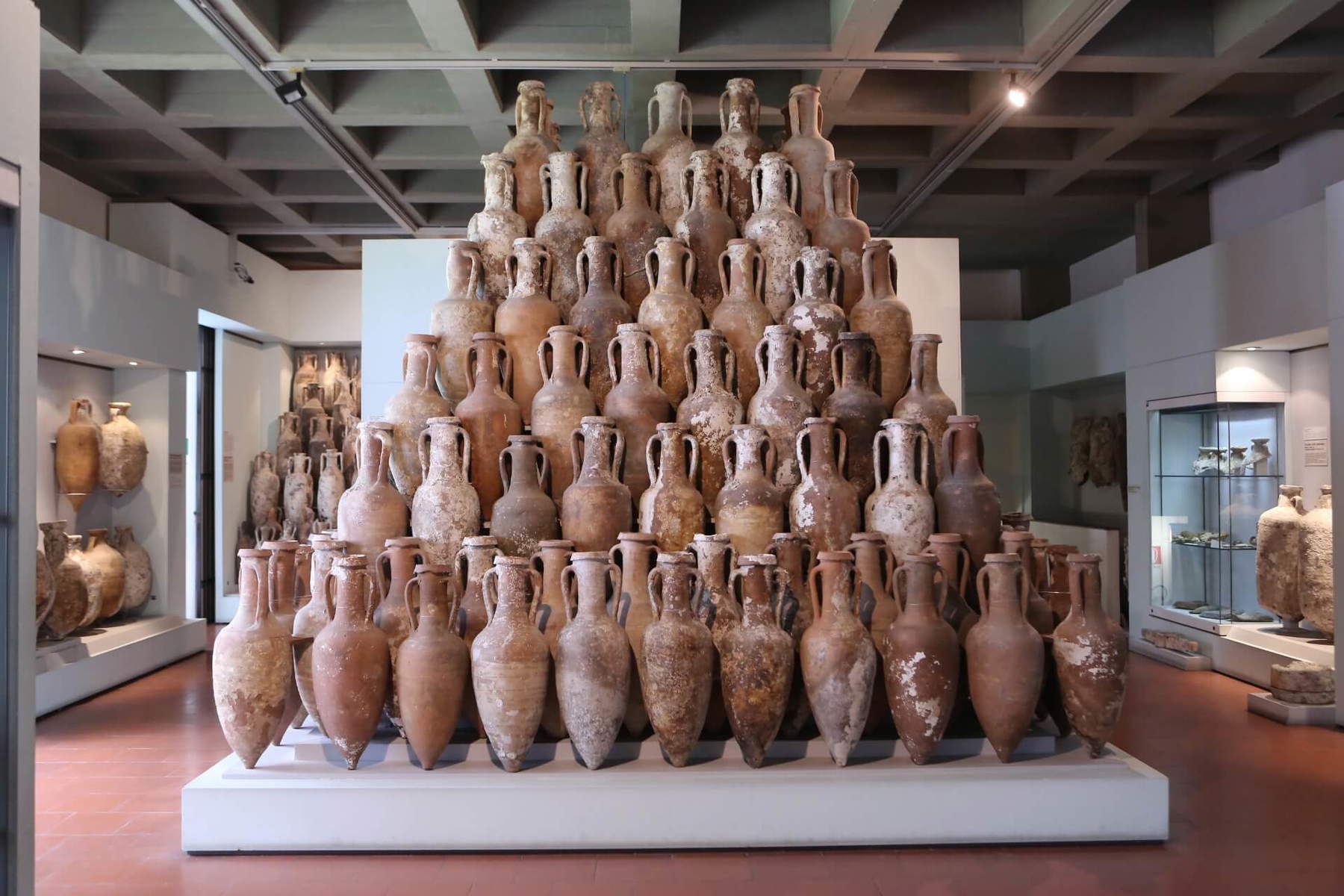
The Cathedral of Lipari is the most important building of worship in the entire archipelago and a true artistic and architectural treasure. St. Bartholomew’s Cathedral dates back to the 16th century, but its current appearance is the result of numerous transformations over the centuries, most recently in the 19th century when the gable of the facade had to be rebuilt. Today St. Bartholomew’s Cathedral is accessed by an imposing staircase that leads visitors up to the three entrance portals in which majestic cornices and fine details stand out. Inside, the frescoes decorating the vaulted roof are of absolute prominence, while the aisles contain numerous fine paintings.
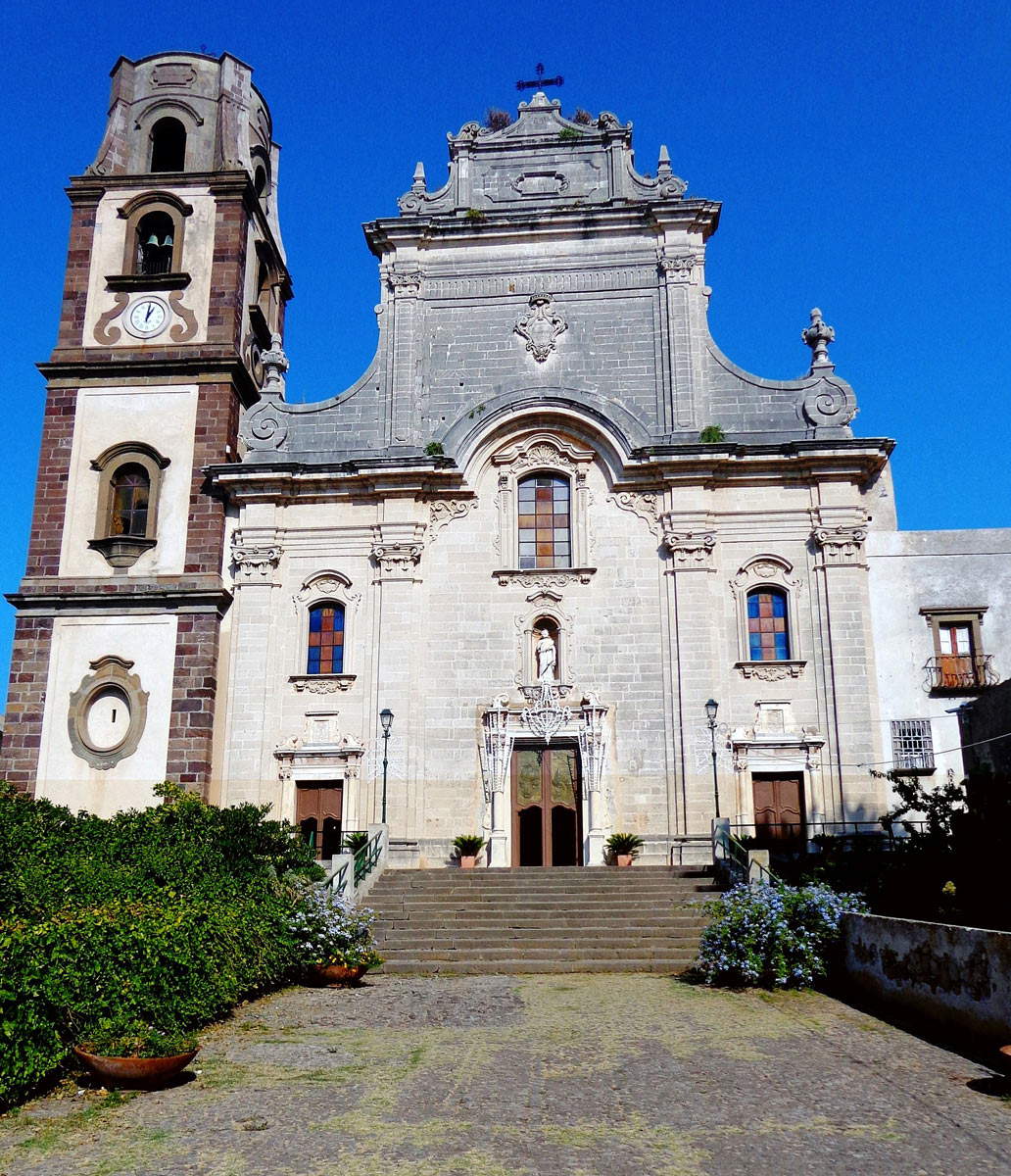
Salina is the island chosen by Massimo Troisi to film his last masterpiece, Il Postino in 1994. An artistic tribute that made this island, the second largest in the archipelago, even more famous, but it was already famous for the beauty of its beaches and enchanting landscapes. Numerous freshwater springs make Salina the greenest island in the entire archipelago and its discovery a real succession of surprises and breathtaking views. There are many nature itineraries that allow you to travel the island from one side to the other, but also not to be missed are the many villages that dot its slopes. Salina is divided into three municipalities: Malfa, Santa Marina and Leni, from which you can reach the beautiful beaches, relax in the many clubs along the waterfront or discover its traditions among churches and museums.

No cars on what is the smallest island of the Aeolian Islands, but also the most characteristic. So whether you decide to get around on foot or ask for a ride on one of the motorcycle-bees used all over Panarea, you cannot help but be amazed at the island’s beauty. Crystal clear waters, and enchanted beaches are the perfect backdrop for the rich social life of this Mediterranean paradise. The heart of the nightlife is definitely San Pietro, but Panarea also offers a lot to those who are looking for a more relaxed vacation, immersed in nature or discovering picturesque glimpses among bays, coves and the charming white houses.
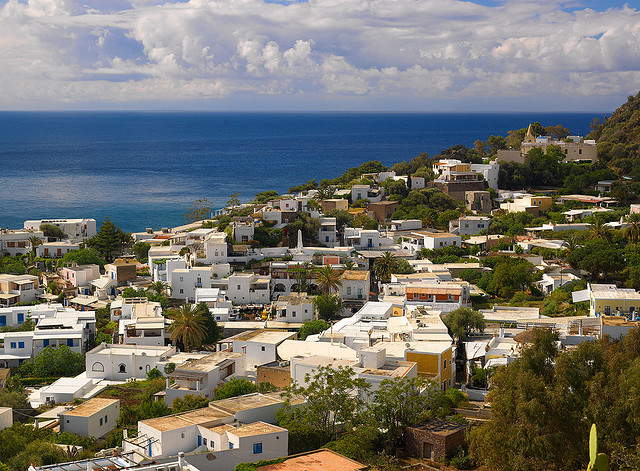
At Cala Junco, one of Panarea’s most picturesque inlets, a prehistoric village dating from the Bronze Age was discovered in the immediate postwar period. It is a still very well-preserved settlement that anciently consisted of 23 huts, the oval-shaped foundations of which can still be observed today. There are also numerous finds that have emerged in recent years during various excavation campaigns that have brought to light ceramics and various tools that are now on display in the halls of the archaeological museum of Lipari. To reach the site one starts from the Zimmari cove and continues along a path with steps that leads to Capo Milazzese.
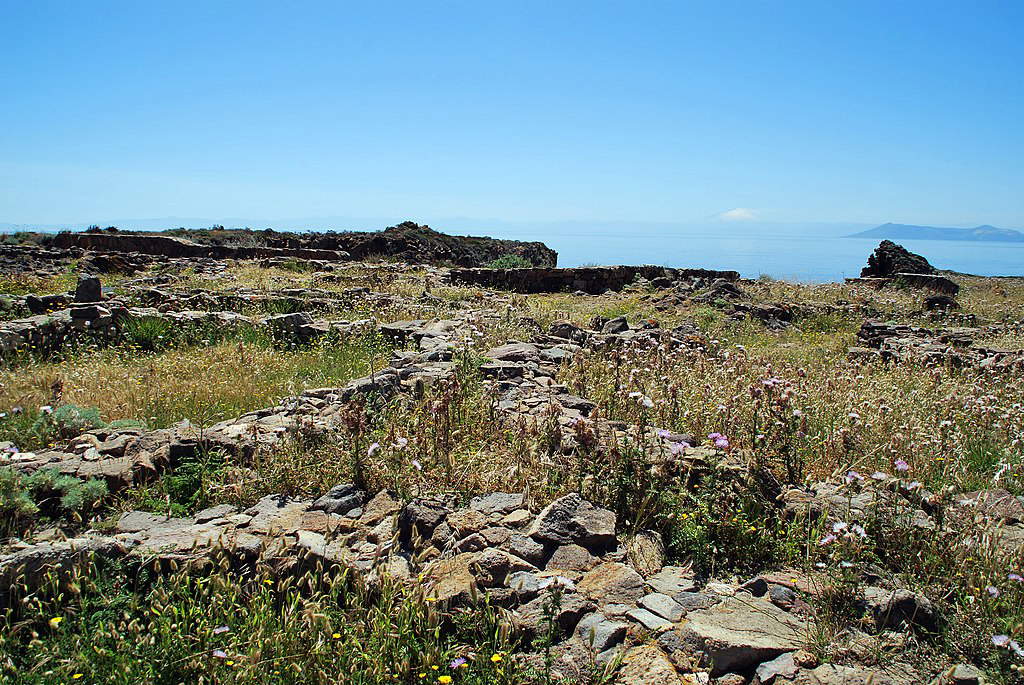
The lighthouse of the Mediterranean, that is also how the island of Stromboli, the northernmost of the Aeolian Islands, is known. Stromboli rises from the sea for almost a thousand meters, but what you see is nothing more than the top of an active volcano that continues for another 1,700 immersed in the crystal clear waters of the Tyrrhenian Sea. This large explosive volcano continually gives spectacular eruptions that are one of the main attractions of the archipelago. A walk to the top of the volcanic cone is not to be missed, but relaxing on the wonderful black sand beaches or even getting lost in the narrow streets of the villages of San Vicenzo and San Bartolomeo or reaching by sea the small village of Ginostra is also not to be missed.
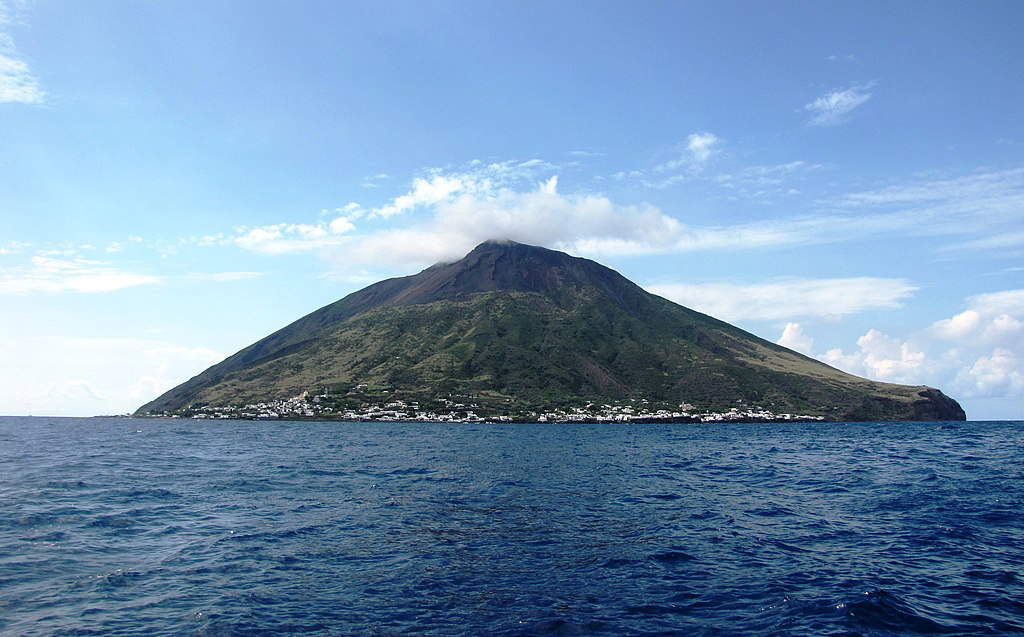
Thanks to their wild beauty, the Aeolian Islands have always been one of the most beloved places for filmmakers from all over the world and an authentic symbol of the Sicilian cinematic landscape. Whether films or documentaries there have been many works made over the decades in the archipelago and , each in its own way, has told its beauty, traditions, but also its evolution. For this reason, a Cinema Museum was founded in Stromboli in 2009, whose purpose is to “collect and return to the archipelago its contemporary visual memory.”

The most remote of the Aeolian islands is also the wildest and the one where the legacy of the tradition of these enchanted places is still felt most strongly. Alicudi is a naturalistic and cultural jewel that still remains far from mass tourism and therefore is still preserved in all its genuine beauty. The characteristic dry-stone walls delimit and mark the steep slopes of Mount Filo dell’Arpa, while fishermen’s boats are a constant presence as one’s gaze wanders over the waters of the island. The beaches, still unspoiled, are located within small inlets and are the ultimate for those seeking a vacation of relaxation and contact with nature.
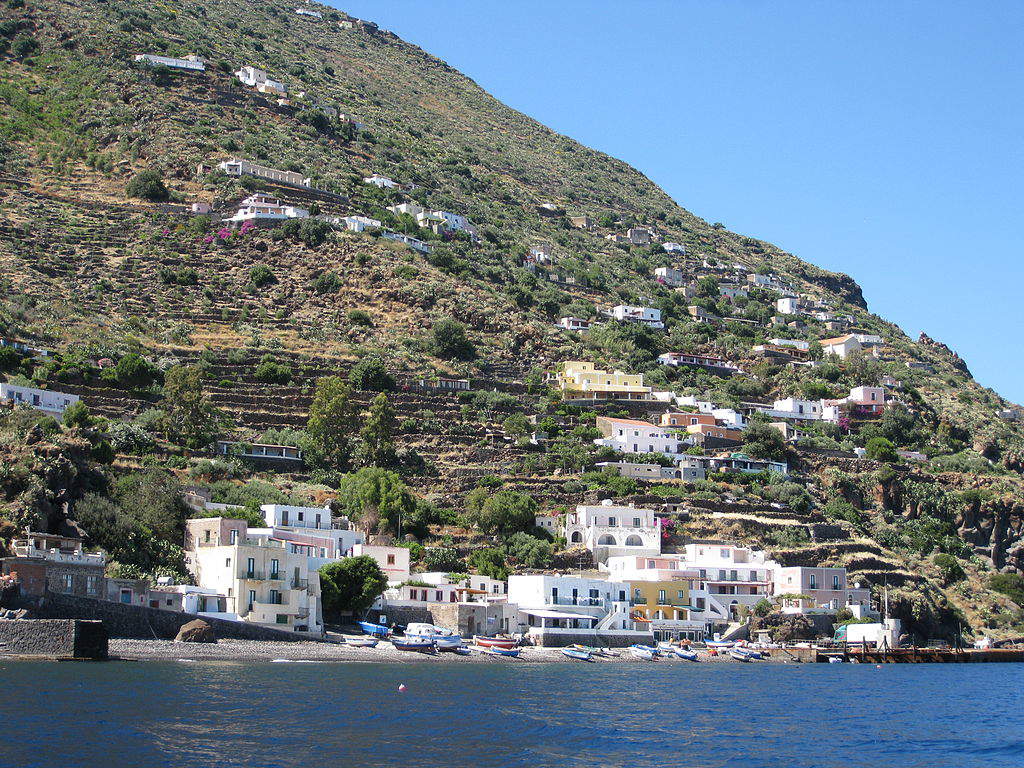
Sea, mountains and a rich and ancient history. Filicudi is small enough to be easily walked around, but it can still offer travelers plenty of places of interest. Starting from Cape Graziano, where there are the remains of a village from the Neolithic period ,one can easily go on to discover the villages of Pecorini Alto and Pecorini Mare, an ancient fishing village that is now the social center of life on the island.However, there are many paths that wind throughout the island and offer truly unique views. Absolutely not to be missed is the climb to the top of Mount Fossa delle Felci, a now extinct volcano that reaches 771 meters in height and from which you can enjoy breathtaking views.

 |
| What to see in the Aeolian Islands. 10 must-see stops |
Warning: the translation into English of the original Italian article was created using automatic tools. We undertake to review all articles, but we do not guarantee the total absence of inaccuracies in the translation due to the program. You can find the original by clicking on the ITA button. If you find any mistake,please contact us.